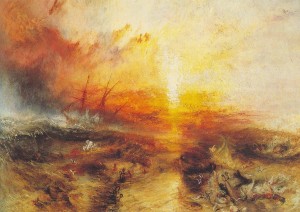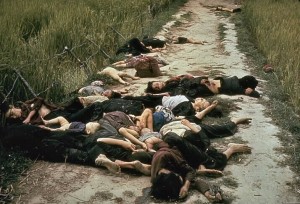Humans attach much greater weight to future losses than to future gains, especially when the former are certain and immediate and the latter are uncertain. Humans take unwise risks to avoid certain and immediate losses.
They don’t want to take risks to pursue gains or will unwisely turn down proposed changes or concessions that offer a mix of gains and losses, even when the promised gains are objectively greater than the losses.
To calculate a loss a Human chooses a personal reference point which is usually the individual’s status quo.
Human beings reject or devalue whatever is freely available to them. They strive for whatever is denied them. They want to fight because when you win a fight you don’t lose a fight. Humans get exited when they have removed an Obstacle.
Without an obstacle Life is Boring. To remove an Obstacle Humans create Imaginary Obstacles. They need a Challenge.
They don’t believe their adversary offers a compromise because when he offers a compromise he is losing. Somewhere behind the compromise is a hidden tactic. The adversary will attack out of the blue and will suddenly win. On the other hand when the compromise is sincere the enemy is getting weaker and it is possible to increase the demands in the negocation.
The total effect is that future compromises and package deals decrease in attractiveness once they are offered especially when they are put there by one’s adversary rather than by a third party (Reactive Devaluation).
The Effect of Future Losses on Human Decision Making is researched in Prospect Theory.
The basic Stategy of Humans is to avoid the Emotions of Loss (Anger, Frustration, Grief, Fear, Sadness, Yearning, Pity, and Sorrow). This is not strange because the Emotions of Loss have a negative impact on the body. They influence the Immune System and are the cause of many ilnesses.
When two parties imagine a joined future where both of them lose they will never cooperate. In terms of the prisoners dilemma this is called a lose/lose-situation.
When two parties have seen a win/win situation and the realization changes into a lose they are in conflict. They have to envision a new win/win or break the cooperation.
Sometimes it is impossible to break a cooperation because both parties share vital resources or don’t know how to divide the assets of the former cooperation. In this case they are in a the win/lose-mode of the (Iterated) Prisonners Dilemma, constantly switching between losing and winning.
When a party wants to move from a lose to a win he has to apply the tactic of Tit-for-Tat. When you apply Tit-for-Tat you simply copy the behaviour of the other. When one of the parties sustains his unwillingness to cooperate both of them are in an Infinite Chain of Conflicts.
When two parties were united it is very difficult to recreate independent disconnected units. Many of the joined activities where performed without negotiation and were never formalized. When two parties cooperate they are acting as one Mind and one Soul.
Moving out of a Cooperative Relationship needs a Cooperative Relationship. When this relationship is broken two parties are needed who enter into a Cooperative Relationship to resolve the Cooperative Relationship on the lower level. When this Cooperative Relationship fails another level has to be created. If all the levels fail they are in an Infinite Chain of Conflicts.
If a Conflict of Interest arises the first action is to avoid the conflict or to speed up the conflict. In the last case the Primary Emotions (Desire, The Emotion of Loss) are bothering them. To avoid a Conflict we have to Articulate our Emotions at the Right Moment in a Respectful Way. We have to Communicate.
Most Conflicts in Nature are violent. Humans have found a way to abstract from Violence. We have created Imaginary Violence. We Fight our Case in Court. We don’t fight our Case in the Court Yard. We have replaced the material Sword of Iron by the Imaginary Silver Sword of Words.
If both parties are unable to define the conflict in a coherent model the conflict will not resolve. They need help to do this. If the advisors of the two parties are unable to do this the conflict has to move to a higher level of abstraction. When the conflict is resolved on this level somebody has to translate the consistent model to the lower level. When this is not possible the conflict starts again. They are in an Infinite Chain of Conflicts.
When an Abstract Model is always Moving Up and Down, the Model is not in Harmony. Harmoniouss Models are applicable on Every Level of Abstraction. Models that are The Same on Every Level are Self-Referencial. When a Conflict is Modelled as a Conflict it will never be solved.
The solution to this problem is to Extend the Context of the Conflict until a Balance has been found. Both Parties have to Widen their Perspective. They have to step out of the Status Quo and Imagine a Bright Future. A Future where the Darkness of the Night has been replaced by the Light of the Day. They have to wake up out of their joint Nightmare and Face Reality.
A Conflict is resolved when all the parties that are involved are Satisfied. They are satisfied when they experience a Balancing of their Emotions. A Victim is satisfied when his Emotion of Revenge is resolved. The Killer is Killed or put into prison for many years. The Emotion of the Killer is balanced by the Emotion of his Victim(s).
To Balance Emotions we have to Objectify Emotions. When we are buying a Car we have to pay Money. The Car is an Objectified Emotion (The feeling of the Freedom to Move) and Money is an Objectified Emotion (The feeling of Freedom to do what we want to Do). The Potential of Money is balanced by the Potential to Move. When we buy we are balancing Potentials.
Humans use Mental Accounting to define what their Potential is. They divide their Potential in many “Isolated” boxes and are unable to combine the boxes. A savings account is meant to save money and not to spend money. If Humans put their Potentials in “closed” Boxes they are Poor although they are Rich.
When they feel Poor they will experience every potential solution of a conflict as a loss. When a Human accepts that the Future is not the Past he will realize that there are many possibilities he has never seen. When a Human accepts that his Potential is his Creativity he is able to negociate with an Open Mind.
Many people believe the Juridical System is the most objective system in our Society. Sadly enough this is not true. The Law is highly confusing. Judges don’t have the background to understand what has really happened. Lawyers are telling their own biased story and most of the cases are very complex. The System is a System of Last Resort. It is used when many future and current losses are accumulating.
The Judicial System is meant to resolve Infinite Chains of Conflict without Applying Violence. This is accomplished by Balancing Emotions by Objectifying Emotions by Articulating the Emotions in Words by Combining the Words into a Model by comparing the Model with an Abstract Juridical Model by Solving the Conflict Applying this Model by Translating the Model to a lower Level by Explaining the Model to the Parties hoping they will Agree so the Emotions are Balanced so both Parties are Satisfied.
If this is not happening the whole process starts all over again until somebody (a Judge, Somebody who Speaks Law) utters a Solomon’s Verdict.
I hope You see why it is much better to settle a Conflict on a Lower Level.
LINKS
 A few months ago I wanted to make an extensive horoscope to learn more about myself, my ex-wife (Merel Visse) and our relationship. I used
A few months ago I wanted to make an extensive horoscope to learn more about myself, my ex-wife (Merel Visse) and our relationship. I used  When I started my company 10 years ago I researched the name Constable. A Constable (Konstapel) is an officer at a Dutch military ship responsible for the canons and the powder.
When I started my company 10 years ago I researched the name Constable. A Constable (Konstapel) is an officer at a Dutch military ship responsible for the canons and the powder. Military man are also romantics. They love to practice in nature. They love uniforms. They bring them back to the time when war was a romantic affair with beautifull ladys dressed in white dancing the night away. They want to be pilots and don’t want to kill anybody. They just want to be free like a bird in the sky.
Military man are also romantics. They love to practice in nature. They love uniforms. They bring them back to the time when war was a romantic affair with beautifull ladys dressed in white dancing the night away. They want to be pilots and don’t want to kill anybody. They just want to be free like a bird in the sky. War is a product of stress and stress is created when people stop to create and collaborate. They stop to create when they spend all their time to make money. They spend so much time making money that they don’t have the time to spend the money. When they spend the money they buy things that are almost never used like six cars, two houses etc. They buy to aquire status in the group of other people that are spending their time to make money. They are wasting vital resources.
War is a product of stress and stress is created when people stop to create and collaborate. They stop to create when they spend all their time to make money. They spend so much time making money that they don’t have the time to spend the money. When they spend the money they buy things that are almost never used like six cars, two houses etc. They buy to aquire status in the group of other people that are spending their time to make money. They are wasting vital resources.